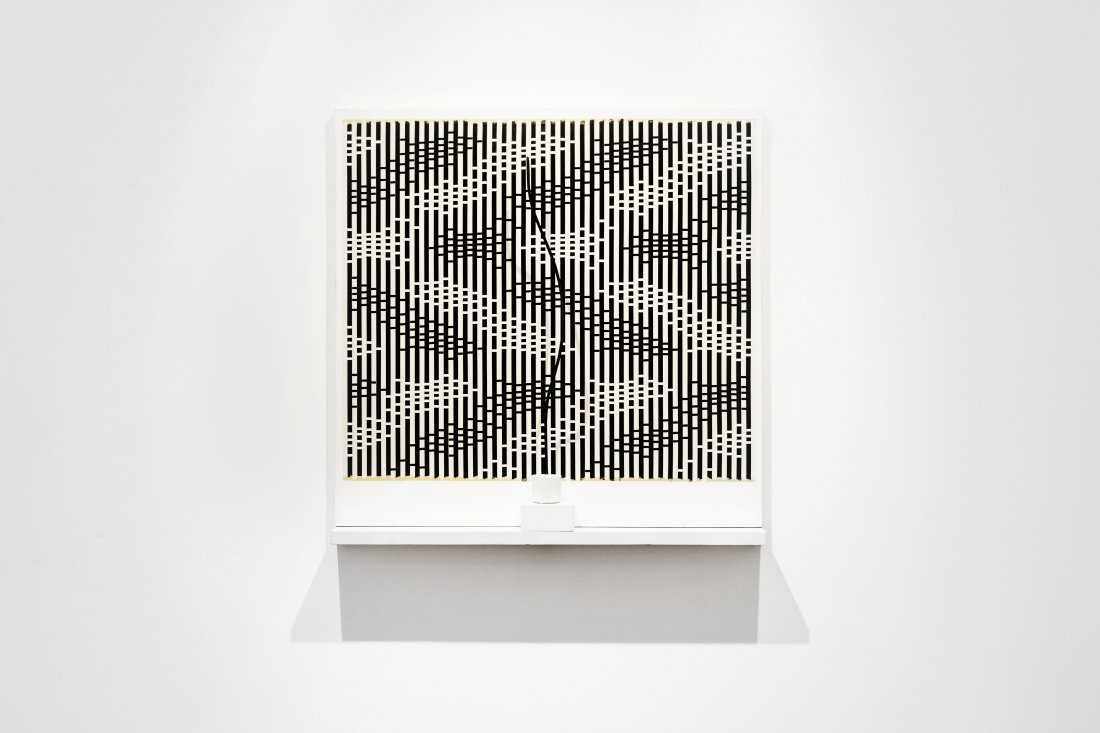Country:
Venue:
Categories:
Exhibition Type:

Flowers Gallery is pleased to announce an exhibition by the late British artist Michael Kidner (1917-2009), presenting works in a range of media, in which Kidner explored a systematic approach to creating images using line and pattern in black and white.
A pioneer of Optical Art, Michael Kidner devoted much of his career to developing work of a constructive nature. Both rational and playful, his art has combined visual responses to the principles of mathematics, science and chaos theories with an abiding interest in the irrational and unpredictable nature of the human condition.
Following his initial investigations into the dynamics of colour as the subject matter of his paintings (focusing on optical effects such as waveforms, moiré patterns and after-images), Kidner took an increasingly rational approach to colour, becoming strongly associated with Systems Art in the 1970s. Developing systems to distinguish shape and colour, Kidner said, “Shape possesses a stronger identity than colour (e.g. a pink elephant)… I now think of colour as a code…”.
Black and White Wave Recording is an example of Kidner’s investigation of wave theory and the use of mathematics to create harmonious images of waveforms, leading to the use of number systems to design his paintings and sculptures during the 1970s. The complex black and white pattern on the canvas of Column No.2 in Front of its Own Image plots a rotation of the three-dimensional column that stands in front of the painting, with each snaking sequence of rectangular and square blocks corresponding to the curvatures of the column. Relating to this work, Kidner said: “It is the area between the second and third dimension which interests me - the order that lies between imagination and reality. Reality involves experience.”
Kidner’s work of the 1980s engaged open-ended lattices and grids which, he determined, would “give the void a visible presence.” The interwoven network of looping and curling black lines in the painting Systematic Breakdown and his mixed media Floorpiece (both exhibited for the first time in the UK since the retrospective exhibition Michael Kidner: Painting, Drawing and Sculpture at the Serpentine Gallery, London in 1984), show how Kidner’s treatment of empty space could conceal what he described as a “powerful source of energy in search of an equilibrium.”
Requiem, a sequence of four paintings also exhibited for the first time since the Serpentine exhibition of 1984, can be seen as a highly personal example of Kidner’s expression of the ‘chaos’ of life through the order of a rational art. In these paintings, the recognisable structure of a lattice of black curving segments is progressively altered through what has been described as a ‘destructive’ system. Francis Pratt has written that Requiem demonstrates “that ‘systems’ can generate feelings and that, as other and earlier expressionists, such as Kandinsky, have properly assumed, ‘expression’ can be constructed.”1
Artist:
Born in Northamptonshire, 1917, Michael Kidner studied History at Cambridge University. His distinguished career has included many honors, influential teaching posts, international group shows and one man exhibitions in Britain, Eastern Europe, Brazil, Austria and Scandinavia. His work was displayed in The Responsive Eye at the Museum of Modern Art, New York in 1965, a group exhibition which subsequently toured the United States; and the Systems exhibition at Whitechapel Art Gallery, London in 1972. A retrospective at the Serpentine Gallery, London in 1984 introduced a new generation of British artists to his work, and he was elected as a Royal Academician in 2004. His work has recently been acquired by the British Academy, UK, and the Museum of Contemporary Art, Buenos Aires, Argentina; and is represented in the public collections of Arts Council Collection, British Council, Government Art Collection, and Tate, UK; Museum of Modern Art, New York; Calouste Gulbenkian Foundation, Lisbon; and Muzeum Sztuki, Lódz, Poland.
His work was included in the recent Systems display at Tate Britain; Kaleidoscope at the Walker Art Gallery, Liverpool; Seurat to Riley: The Art of Perception, Pattern, Pointillism & Op art touring from Compton Verney to The Holbourne Museum; London in the 60s at Louis Stern Fine Arts, Los Angeles; and will be included in the upcoming Criminal Ornamentation, a Hayward Touring / Arts Council Collection group exhibition curated by Yinka Shonibare MBE, on view from September 2018 - September 2019.
21 Cork Street, London, W1S 3LZ

